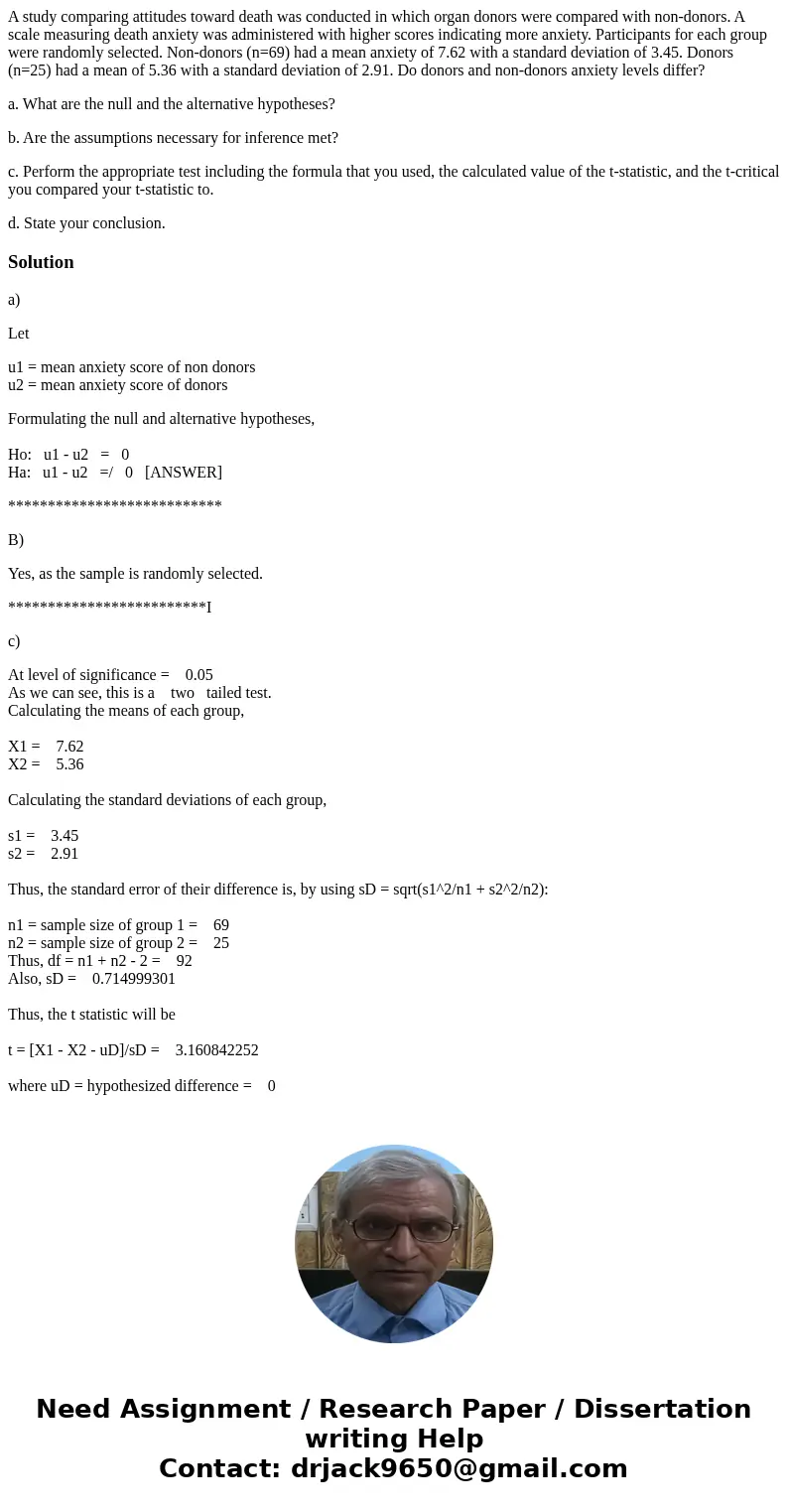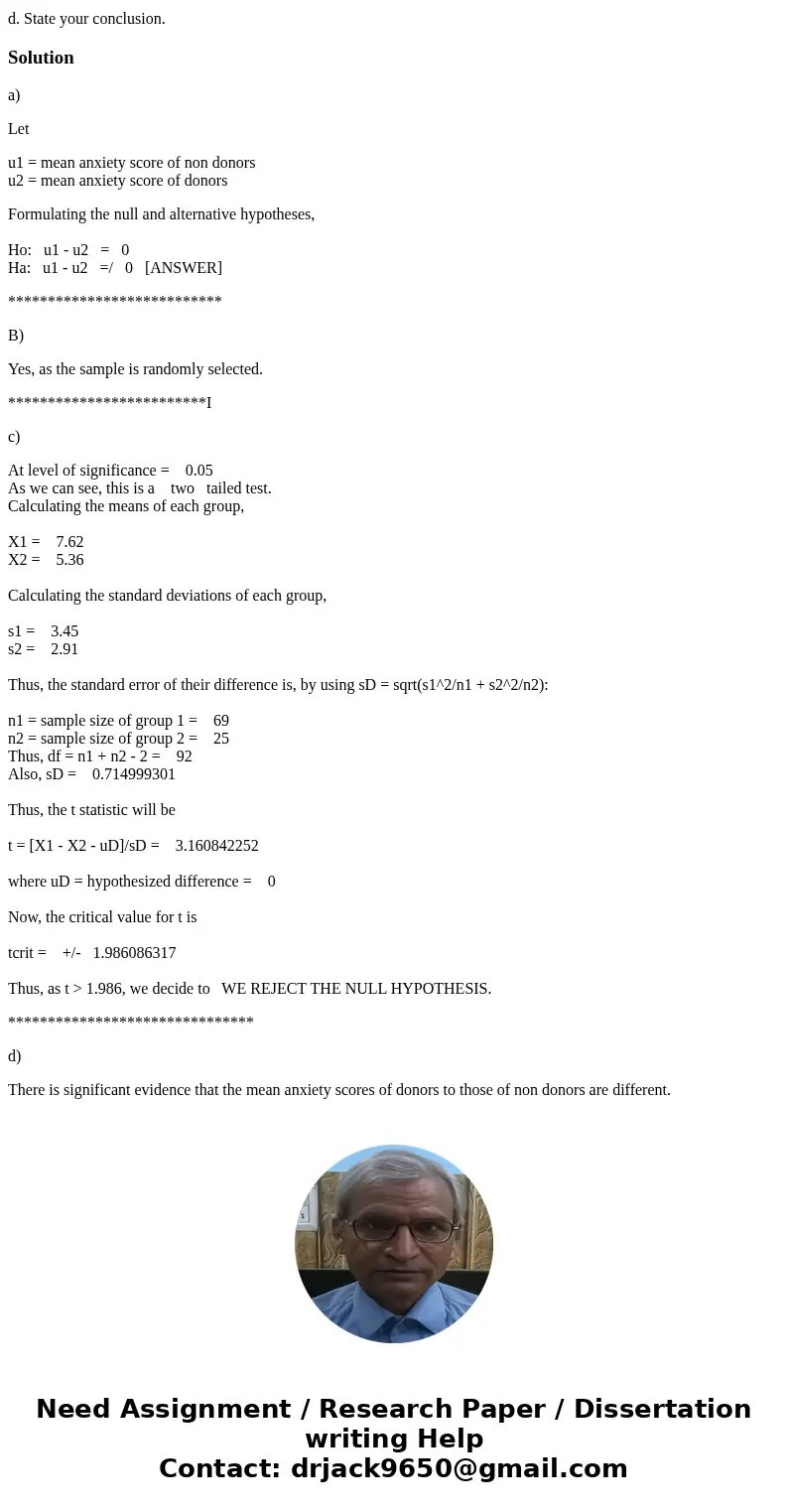A study comparing attitudes toward death was conducted in wh
A study comparing attitudes toward death was conducted in which organ donors were compared with non-donors. A scale measuring death anxiety was administered with higher scores indicating more anxiety. Participants for each group were randomly selected. Non-donors (n=69) had a mean anxiety of 7.62 with a standard deviation of 3.45. Donors (n=25) had a mean of 5.36 with a standard deviation of 2.91. Do donors and non-donors anxiety levels differ?
a. What are the null and the alternative hypotheses?
b. Are the assumptions necessary for inference met?
c. Perform the appropriate test including the formula that you used, the calculated value of the t-statistic, and the t-critical you compared your t-statistic to.
d. State your conclusion.
Solution
a)
Let
u1 = mean anxiety score of non donors
u2 = mean anxiety score of donors
Formulating the null and alternative hypotheses,
Ho: u1 - u2 = 0
Ha: u1 - u2 =/ 0 [ANSWER]
***************************
B)
Yes, as the sample is randomly selected.
*************************I
c)
At level of significance = 0.05
As we can see, this is a two tailed test.
Calculating the means of each group,
X1 = 7.62
X2 = 5.36
Calculating the standard deviations of each group,
s1 = 3.45
s2 = 2.91
Thus, the standard error of their difference is, by using sD = sqrt(s1^2/n1 + s2^2/n2):
n1 = sample size of group 1 = 69
n2 = sample size of group 2 = 25
Thus, df = n1 + n2 - 2 = 92
Also, sD = 0.714999301
Thus, the t statistic will be
t = [X1 - X2 - uD]/sD = 3.160842252
where uD = hypothesized difference = 0
Now, the critical value for t is
tcrit = +/- 1.986086317
Thus, as t > 1.986, we decide to WE REJECT THE NULL HYPOTHESIS.
*******************************
d)
There is significant evidence that the mean anxiety scores of donors to those of non donors are different.


 Homework Sourse
Homework Sourse